#budandtender
Text
Cannabis: A Multifaceted Plant for a Multitude of Uses

Introduction
Cannabis, a plant that has been a part of human history for thousands of years, is experiencing a resurgence in popularity as its myriad of uses become increasingly recognised. From its strong fibres used in textiles and paper to its nutritional and medicinal properties, cannabis has proven itself to be a truly multipurpose plant. This article will delve into the various aspects of this versatile plant and explore how it has been utilised throughout history and across cultures.
The History of Hemp: A Material with Unmatched Strength
One of the most well-known uses of cannabis is in the production of hemp, a material derived from the plant's strong fibres. These fibres have been used for millennia to create durable cloth, rope, and paper. The Vikings, known for their seafaring prowess, utilised hemp to construct sails for their ships, enabling them to voyage from Scandinavia to Nova Scotia. In the United States, Betsy Ross sewed the first flag from hempen cloth, and the Declaration of Independence was written on hemp paper. Even the now obsolete German currency, Deutsche Mark, were once printed on hemp paper.
The use of hemp extended beyond these applications, as seen in the Netherlands, where windmills were built specifically to crush hemp stalks. This demonstrates the importance of hemp in various industries and highlights the plant's incredible versatility.
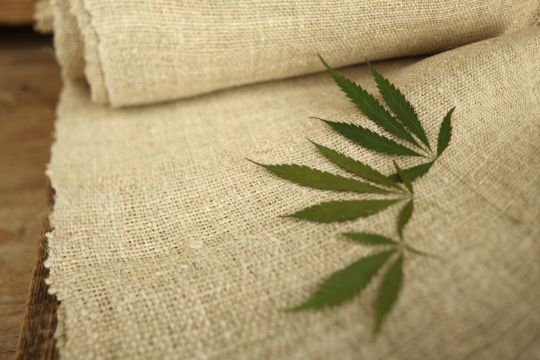
Cannabis as a Nutritional Powerhouse
While the strength of its fibres may have initially attracted humans to the cannabis plant, its potential as a food source likely played a significant role in its widespread cultivation. Cannabis seeds, or hempseeds, are packed with essential nutrients such as polyunsaturated fats, essential fatty acids, and proteins. These qualities qualify hempseed as a functional food, meaning it provides health benefits beyond basic nutrition.
For over three thousand years, Asian cultures have utilised hempseed as both a food and a medicine. Despite the prohibition of cannabis products in the United States, hempseed has been allowed for use in food over the last two decades. This highlights the recognition of its nutritional value and potential health benefits.

Cannabis Resin: A Source of Medicinal and Psychoactive Compounds
The resin produced by the cannabis plant is another aspect that has garnered significant attention due to its medicinal and psychoactive properties. The compounds found in cannabis resin, such as THC (tetrahydrocannabinol) and CBD (cannabidiol), have been the focus of breeding efforts to increase their production. These efforts have led to the development of various cannabis drug chemotypes around the world, with some cultivars producing only THC, others producing both THC and CBD, and a few expressing propyl THCV (tetrahydrocannabivarin) and/or CBDV (cannabidivarin).
The medicinal uses of cannabis resin have been widely researched, with evidence suggesting its effectiveness in treating conditions such as chronic pain, epilepsy, multiple sclerosis, and more. The psychoactive effects of THC have also led to the recreational use of cannabis, which has sparked debates surrounding its legalisation and regulation.

Environmental Benefits of Cannabis Cultivation
In addition to its myriad uses, cannabis cultivation offers several environmental benefits. Hemp plants are known to absorb large amounts of carbon dioxide, making them an effective tool in combating climate change. Furthermore, hemp requires fewer pesticides and herbicides than many other crops, reducing the environmental impact of agriculture.
Cannabis can also be used as a source of biofuel, offering a renewable and eco-friendly alternative to fossil fuels. Additionally, the fast growth rate and low water requirements of hemp make it a sustainable crop, capable of providing resources without causing significant strain on natural resources.
Conclusion
Cannabis is a truly remarkable plant, with applications ranging from textiles and paper to nutrition and medicine. As society continues to recognise its numerous benefits, it is likely that the cultivation and use of cannabis will only continue to grow. By embracing this versatile plant, we can harness its potential to improve our health, industries, and environment for generations to come.
#cannabis#cannabismedicine#cannabishistory#medical cannabis#cbd#feelgreatagain#cbdoil#budandtender#health#endocannabinoidsystem
98 notes
·
View notes
Text
Water Hash: The Pure and Potent Extraction Method
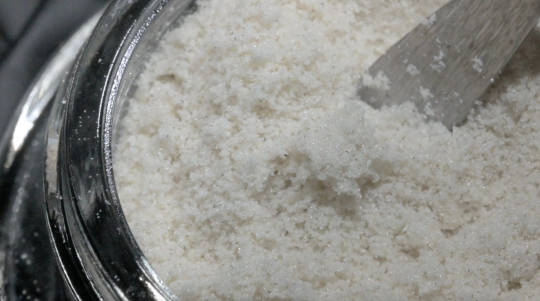
Water hash, a favourite method of making cannabis concentrates worldwide, has gained significant popularity due to its pure and potent characteristics. This article will delve into the details of water hash, its production methods, its surge in popularity, and how it competes with solvent hash.
Understanding Water Hash
Water hash, also known as bubble hash, gets its name from the efficient water-based process used to collect glands from the trim, leaf, and bud bits of the cannabis plant. It is essentially a loose, kief-type product that can be smoked directly or pressed into traditional hashish form. The result is a pure and potent product that quickly wins over many who experience it.
Production of Water Hash: Simplicity and Precision

One of the main attractions of water hash is its simple production process. It can be made in small or large quantities, depending on the user's needs. The ready-made systems available in the market have significantly simplified the process. These systems have enhanced the precision and efficiency of the water hash production process, contributing to its increasing popularity.
For those who prefer a DIY approach, it's possible to make water hash using home-gathered equipment. The key components include ice, water, cannabis material, and specially designed "bubble bags" that help filter out the trichomes from the plant matter. This simplicity makes it an accessible option for many.
The Rise of Water Hash Popularity
Over the past two decades, water hash has dominated the world of cannabis concentrates. Its popularity stems from its pure and potent nature, which offers users a high-quality experience. Additionally, the absence of harmful solvents and chemicals in the extraction process makes it a safer choice, not only for consumption but also for production, as there's no risk of explosions or exposure to hazardous materials.
Competition with Solvent Hash
However, water hash's reign is being challenged by the rise of solvent hash. Products like wax, shatter, budder, and oil have begun to replace bubble hash on many dispensary shelves in the United States over the last few years.
The competition from solvent hash has forced water hash makers to up their game. Ultra-fine water hash is now being marketed as "solventless" wax, reflecting a level of distrust about poorly made butane-tainted products. High-grade water hash is also excellent for edibles, and the best of it is indeed dabable.
The Safety of Water Hash
One of the significant advantages of water hash is its safety. The production method doesn't involve any sketchy chemicals or pose a risk of explosions. This safety factor, combined with the pure and potent nature of the product, continues to make water hash a preferred choice for many.
In conclusion, water hash offers a simple, safe, and efficient method for producing high-quality cannabis concentrates. Despite the increasing popularity of solvent-based products, water hash continues to hold its ground due to its purity, potency, and safety. Whether you're a novice or an experienced user, Water Hash provides a unique and satisfying experience.
11 notes
·
View notes
Text
Revolutionising Construction: The Power of Hemp as a Sustainable Building Material

Introduction: A Return to Hemp
The need for sustainable building materials has never been more pressing, and the answer may lie in an ancient plant: hemp. This versatile crop, cultivated for over 10,000 years, is making a comeback in modern construction due to its exceptional properties and environmental benefits.
The Environmental and Economic Advantages of Hemp
Hemp offers a promising alternative to traditional timber-based materials. According to research conducted by Dewey & Merrill (Bulletin #404, United States Dept. of Agriculture, 1916), one acre of hemp produces as much cellulose fibre pulp as 4.1 acres of trees. This makes hemp a highly efficient source of material for pressed boards and particle boards, as well as concrete construction moulds. Moreover, hemp cultivation requires less water and fewer pesticides than traditional crops, adding to its environmental appeal.
Superior Strength and Flexibility: Hemp vs. Wood
In addition to its environmental advantages, hemp also outperforms wood in terms of strength and flexibility. Between 1991-1993, William B. Conde of Conde's Redwood Lumber, Inc., in collaboration with Washington State University, demonstrated that hemp composite building materials surpass wood fibre in these key areas, even when used in load-bearing applications like beams. The economic implications of this are significant, offering the potential for cheaper, more resilient buildings.
Isochanvre: The Mineralising Power of Hemp

One particularly intriguing application of hemp in construction is the creation of isochanvre, a material made from hemp hurds mixed with lime. This unique substance petrifies over time, turning into a mineral state that can last for centuries. A testament to its longevity, archaeologists have discovered a bridge in southern France, built during the Merovingian period (500-751 A.D.), using this process.
Hemp in Carpeting: A Strong, Healthier Choice
Hemp also has a long history in carpet manufacturing, where its strong, rot-resistant fibres provide an ideal backing material. Today, hemp carpeting offers a compelling alternative to synthetic materials, which release toxic fumes when burned and can trigger allergic reactions.
Plumbing with Hemp: A Renewable Solution
Even in areas as unexpected as plumbing, hemp presents a viable alternative. Plastic plumbing pipes, traditionally made from non-renewable coal or petroleum-based feedstocks, can be manufactured using renewable hemp cellulose. This not only reduces our dependence on fossil fuels but also contributes to a circular economy.
Envisioning a Future Built on Hemp
As we face the urgent challenges of climate change and resource scarcity, the potential of hemp as a sustainable building material is more relevant than ever. From the walls and beams of our homes to the carpets underfoot and the pipes beneath our streets, hemp offers a way to build, plumb, paint, and furnish our world sustainably. It's time to reimagine our future, built not on dwindling resources, but on the world's number-one renewable resource - hemp.
3 notes
·
View notes
Text
Understanding the Role of Endocannabinoids in Psoriasis Regulation
World Psoriasis Day October 29th
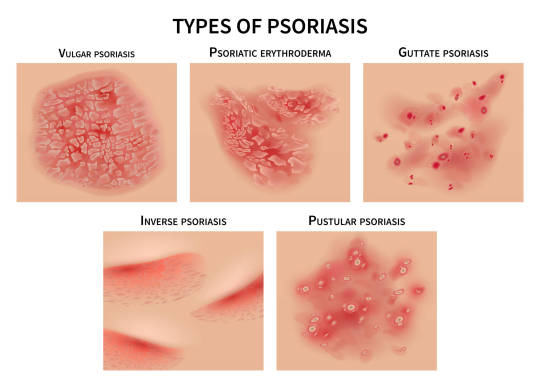
Introduction
World Psoriasis Day is a global event that shines a light on psoriasis, a chronic autoimmune condition that causes red, scaly patches to appear on the skin. It's an opportunity to educate and raise awareness about this often misunderstood disease. In this article, we'll delve into how endocannabinoids can regulate psoriasis, providing a unique perspective on the disease's underlying mechanisms.
Understanding Endocannabinoids
Endocannabinoids are naturally occurring compounds within our bodies that interact with the endocannabinoid system (ECS). The ECS is a complex cell-signalling system that plays a key role in regulating a range of functions and processes, including immune response, pain, mood, and more.
The two primary endocannabinoids are anandamide (AEA) and 2-arachidonoylglycerol (2-AG). These molecules bind to CB1 and CB2 receptors found throughout the body, triggering various physiological responses. Interestingly, research has indicated that these endocannabinoids and their receptors may play a significant role in managing skin health and diseases such as psoriasis.

Endocannabinoids and Skin Health
Our skin is not just a barrier protecting us from the outside world; it's also a complex organ with its own ECS. This system plays a crucial role in maintaining skin homeostasis – the balance of cell growth and death. In conditions like psoriasis, this balance is disrupted, leading to an overproduction of skin cells.
Research has shown that endocannabinoids can influence several key aspects of skin health. They can regulate skin cell proliferation and differentiation, immune response, and inflammation - all critical factors in psoriasis.
Endocannabinoids and Psoriasis Regulation
Psoriasis is characterised by an overactive immune response, leading to inflammation and rapid skin cell growth. The role of endocannabinoids in psoriasis regulation primarily revolves around their anti-inflammatory and immunomodulatory properties.
Studies have shown that endocannabinoids can reduce inflammation by downregulating the production of pro-inflammatory cytokines, proteins that promote inflammation. This could potentially help manage the chronic inflammation seen in psoriasis.
Moreover, endocannabinoids can also modulate the immune response. They can inhibit the overactive immune cells responsible for the rapid skin cell growth in psoriasis, helping to restore balance in the skin's ecosystem.
Research also suggests that people with psoriasis may have an impaired endocannabinoid system, with lower levels of endocannabinoids in their skin. This could potentially contribute to the disease's development and progression, highlighting the potential therapeutic value of targeting this system.
Conclusion
While the relationship between endocannabinoids and psoriasis is complex and still not fully understood, current research indicates a promising role for these molecules in regulating the disease. By modulating inflammation and immune response, endocannabinoids could potentially help manage psoriasis symptoms and improve skin health.
However, it's important to note that more research is needed to fully understand the mechanisms involved and how best to harness the power of endocannabinoids for psoriasis treatment. As we celebrate World Psoriasis Day, let's also celebrate the ongoing research and advancements that bring us closer to understanding and effectively managing this challenging condition.
#psoriasisawareness#psoriasisawarenessmonth#psoriasis#psoriatic arthritis#cbd#endocannabinoidsystem#health#feelgreatagain#budandtender
4 notes
·
View notes
Text
The Impact of Rabies on the Endocannabinoid System: Unraveling the Connection
World Rabies Day 28th September

Introduction
Rabies, a deadly viral disease that affects the nervous system, has long been a cause for concern worldwide. While its effects on the central nervous system are well-documented, recent research has shed light on the impact of rabies on the endocannabinoid system. This article aims to explore this intriguing connection and understand how rabies affects the delicate balance of the endocannabinoid system.
Understanding Rabies
Rabies is primarily transmitted through the bite or scratch of an infected animal, typically dogs, bats, or other wildlife. Once the virus enters the body, it travels to the brain, causing inflammation and neurological symptoms. Rabies can be classified into two forms: furious rabies, characterized by aggressive behaviour, and paralytic rabies, which leads to muscle weakness and paralysis.
The Endocannabinoid System

The endocannabinoid system (ECS) is a complex network of receptors, endocannabinoids, and enzymes that play a crucial role in maintaining homeostasis within the body. It regulates various physiological processes such as pain sensation, mood, appetite, and immune response. The ECS consists of two main receptors, CB1 and CB2, which are found throughout the body, including the brain.
Impact of Rabies on the Endocannabinoid System
Recent studies have indicated that rabies infection can disrupt the functioning of the endocannabinoid system. The virus affects the CB1 receptors in the brain, leading to altered neurotransmission and impaired signalling. This disruption may contribute to the behavioural changes observed in individuals infected with rabies, such as aggression and hyperactivity.
Inflammation and Immune Response

Rabies infection triggers a robust inflammatory response in the brain, leading to encephalitis. This inflammation can further impact the endocannabinoid system, as inflammatory mediators can interfere with the normal functioning of CB1 receptors. The dysregulation of the ECS due to inflammation may contribute to the neurological symptoms associated with rabies.
Conclusion
The connection between rabies and the endocannabinoid system highlights the intricate relationship between viral infections and the body's regulatory systems. While much remains to be discovered, studying the impact of rabies on the ECS may provide valuable insights into the development of novel treatment strategies. By unravelling this complex interplay, researchers can pave the way for improved outcomes for individuals affected by this devastating disease.
#rabies#rabies awareness#endocannabinoidsystem#endocannabinoids#cannabis#cbd#health#feelgreatagain#budandtender
2 notes
·
View notes
Text
Unveiling the Mind's Green Secret: How Endocannabinoids Shape Mental Health
World Suicide Prevention Day 10th September

Introduction
Mental health is a complex and multifaceted aspect of our overall well-being. Various factors contribute to the development and maintenance of mental health disorders, including genetics, environment, and neurobiology. In recent years, there has been growing interest in the role of endocannabinoids in influencing mental health. Endocannabinoids are naturally occurring compounds within our bodies that interact with the endocannabinoid system, which plays a crucial role in regulating various physiological processes. This article aims to explore the influence of endocannabinoids on mental health, focusing specifically on their effects beyond the medical use of CBD.
Understanding the Endocannabinoid System
To comprehend how endocannabinoids influence mental health, it is essential to have a basic understanding of the endocannabinoid system (ECS). The ECS consists of three main components: endocannabinoids, receptors, and enzymes. The two primary endocannabinoids are anandamide (AEA) and 2-arachidonoylglycerol (2-AG), which bind to cannabinoid receptors (CB1 and CB2) located throughout the central nervous system and peripheral tissues. These receptors modulate various physiological processes, including mood, stress response, and cognitive function.

How endocannabinoids influence mental health
Regulating Emotional States: Endocannabinoids have been linked to the regulation of emotional states, including mood and anxiety. Studies suggest that anandamide, one of the primary endocannabinoids, interacts with CB1 receptors in brain regions associated with emotional processing, such as the amygdala and prefrontal cortex. By modulating neurotransmitter release and synaptic plasticity, endocannabinoids contribute to the regulation of mood and emotional responses.
Stress and Resilience: Stress is a significant factor that can impact mental health, and the ECS appears to play a crucial role in modulating the stress response. When faced with stress, the release of endocannabinoids is enhanced, which helps to dampen the stress response and restore homeostasis. The activation of CB1 receptors in brain regions involved in stress regulation, such as the hypothalamus and hippocampus, can reduce the release of stress hormones, thereby promoting resilience and emotional stability.

Neuroplasticity and Neurogenesis: Neuroplasticity, the brain's ability to reorganise and form new connections, is fundamental for learning and memory processes. Endocannabinoids have been found to play a role in modulating neuroplasticity by facilitating synaptic plasticity and neuronal communication. Furthermore, emerging evidence suggests that endocannabinoids may also promote neurogenesis, the formation of new neurons in certain brain regions, including the hippocampus. These processes are essential for mental well-being and cognitive function.
Endocannabinoids and Mental Disorders: Given the involvement of endocannabinoids in various aspects of mental health regulation, it is unsurprising that alterations in the ECS have been associated with mental disorders. Studies have linked dysregulation of the ECS to conditions such as depression, anxiety disorders, post-traumatic stress disorder (PTSD), and schizophrenia. Understanding these associations provides insights into potential therapeutic targets and the development of novel treatments.
Conclusion
Endocannabinoids play a significant role in influencing mental health by regulating mood, stress response, cognitive function, and reward-related behaviours. Understanding the intricate interplay between endocannabinoids and the endocannabinoid system can provide valuable insights into the development and treatment of mental health disorders. Further research is needed to fully comprehend the complexities of this system and its potential therapeutic implications. By unravelling the mysteries of endocannabinoids, we may pave the way for novel approaches to enhance mental well-being.
If you want to help raise awareness about mental health, you can donate here to Mental Health UK.
#health#mental health#mental health awareness#endocannabinoids#endocannabinoidsystem#cbd#cannabis#health and wellness#feelgreatagain#budandtender
2 notes
·
View notes
Text
The Dawn of a New Era: How Nomadic People and Cannabis Shaped Early Agriculture
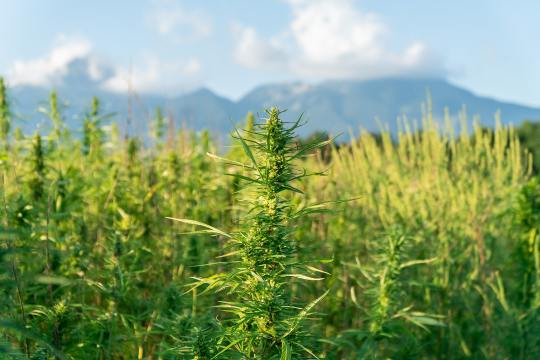
The Great Migration and the Birth of Settlements
A long ice age had recently ended, and a small group of nomadic people was on the move, venturing far from their ancestral territory. They had migrated into this remote location under pressure from other more powerful and aggressive human groups. At this time, humans had not yet developed techniques for cultivating plants and domesticating animals. Like all other peoples during this ancient era, this group depended completely on hunting and gathering their food and other required resources. The river adjacent to their new settlement supplied water and promised other important natural resources critical for survival.
Accidental Innovators: The Unintentional Creation of Fertile Soil
As time passed, they increasingly disturbed the clearing surrounding their settlement and in the process, inadvertently created nitrogen-rich soil environments by depositing organic waste materials in dump heaps. By trampling and cutting back much of the original vegetation, the immigrants unintentionally favoured several sun-loving plants that were preadapted to the new, human-made open scars with waste-enriched soil.
The Serendipitous Discovery of Cannabis
One plant that often colonises dump heaps or waste areas in open environments is Cannabis, a tall herb that is naturally adapted to disturbed or sunny habitats. Toward the end of the short, warm summer, women gathering seasonal fruits and nuts discovered stands of wild hemp full of ripe seeds along the river near their settlement. They teased out and tasted a few seeds and decided they were worthwhile food. Unable to remove the myriad of seeds easily, they cut whole plants with seeds still attached and dragged them back to camp. Thus seeds of this conspicuous herb were brought into the group’s clearing during their search for food. Here, Cannabis found a favourable niche in the sunny, moist, and well-drained soil, nutrient-enriched by human activities.
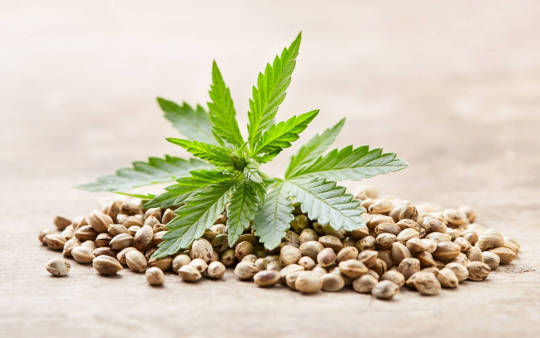
The Birth of Hemp Cultivation
Women experimented with these plants, letting them dry and flailing them against cleared ground. As they whipped the dry plants against the open earth, seeds flew into the air. Most landed near the threshing where they were swept up, but a few strayed farther and were not retrieved. Other seeds were left behind in threshed plants that were discarded onto dump heaps.
From Wild Hemp to Settled Agriculture
By the end of the next cold season, new spring showers gave the forgotten hemp seeds the necessary moisture required for germination and growth, and the plants flourished through the summer, thriving on available water, sunlight, and nitrogen-rich piles of organic waste. Within a few years, trips to collect wild hemp ceased, and then the seed was harvested only from self-sown Cannabis plants in disturbed environments near their settlement. Human and plant interactions such as these were the bridge between hunting and gathering and agriculture; these were the incipient moments of early settled farming.
Conclusion: The Legacy of Early Agricultural Practices
The nomadic people's unintentional discovery and cultivation of Cannabis marked a turning point in human history. The transition from hunting and gathering to settled farming laid the foundation for the development of complex societies, enabling the rise of cities, trade, and technological advancements. This tale of the early interactions between humans and plants serves as a reminder of the incredible adaptability and resourcefulness of our ancestors, who shaped the world we live in today.
3 notes
·
View notes
Text
The Ancient Art of Bhang Lassi: A Mellow Cannabis-Infused Beverage from India

Introduction
For over a thousand years, the Indian subcontinent has enjoyed a unique and traditional cannabis-infused beverage called bhang lassi. This drink is made from a combination of milk, spices, and bhang – a paste created by grinding marijuana leaves and flowers. While it may seem like an intoxicating concoction, the preparation method of bhang lassi ensures that it delivers a milder effect compared to other cannabis products. In this article, we will explore the history of bhang lassi, its cultural significance, and the science behind its gentle impact.
The History and Cultural Significance of Bhang Lassi
Bhang lassi has deep roots in Indian culture and has been consumed for various purposes, including medicinal, religious, and recreational. It is often associated with the Hindu deity Lord Shiva, who is believed to have used bhang to attain a state of meditation and relaxation. During the annual festival of Holi, bhang lassi is consumed as a symbol of breaking social barriers and promoting unity among people.
In addition to its spiritual significance, bhang lassi has been used in Ayurvedic medicine for centuries. It is believed to help treat various ailments such as fever, digestive issues, and anxiety. Moreover, bhang lassi is also consumed for its mild euphoric effects, which are considered less potent than other forms of cannabis consumption.

The Science Behind Bhang Lassi's Mild Effects
Despite containing up to an ounce of cannabis flowers and leaves, bhang lassi does not deliver an overpowering effect. This is because the preparation method prevents the full extraction of THC, the psychoactive compound responsible for the "high" experienced when consuming cannabis.
When making bhang lassi, the first step involves creating a cannabis water tea. This process does not heat the bhang above the temperature at which THC acid becomes psychoactive. As a result, only a small portion of the THC is activated and released into the water. Furthermore, since cannabinoids are not water-soluble, the majority of them remain unextracted during this step.
The addition of milk to the cannabis water tea further dilutes the concentration of THC. Fats in the milk help bind with the remaining cannabinoids, but the overall effect remains mild due to the limited extraction process. This intentional preparation method aligns with the cultural and medicinal purposes of bhang lassi – providing a gentle, soothing experience rather than an overwhelming high.
Conclusion
Bhang lassi is a fascinating example of how ancient cultures have harnessed the power of cannabis for spiritual, medicinal, and recreational purposes. Its unique preparation method ensures that the drink delivers a milder effect, making it suitable for various occasions and users. As interest in cannabis-infused beverages grows globally, the traditional art of bhang lassi serves as a reminder of the importance of understanding and respecting the cultural context of such practices.
#cannabis#cannabishistory#bhang#bhanglassi#indian culture#indianhistory#ancienthistory#cannabisrituals#cbd#feelgreatagain#budandtender
2 notes
·
View notes
Text
Hemp: A Sustainable Solution for a Greener Planet
World Environment Day 5th June
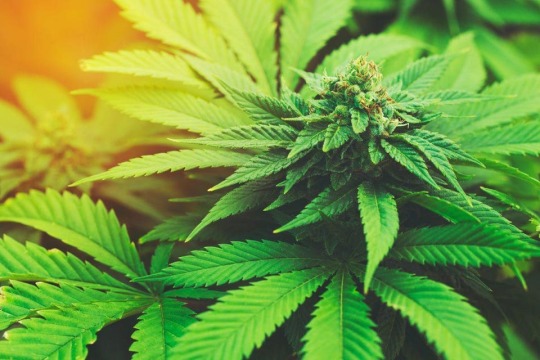
Climate change and environmental degradation have become pressing global concerns, prompting the search for sustainable alternatives to traditional materials and practices. One such alternative is hemp, a versatile plant with numerous applications in various industries. This article explores the environmental benefits of hemp cultivation and its potential to contribute to a cleaner, healthier, and more sustainable planet.
Hemp's Environmental Benefits
1. Carbon Sequestration
Hemp plants are highly effective at absorbing carbon dioxide (CO2) from the atmosphere, helping to combat climate change. Studies have shown that a single acre of hemp cultivation can absorb as much as 4.1 metric tons of CO2 per year. This remarkable ability to sequester carbon makes hemp an essential ally in the fight against global warming.
2. Water Conservation
Hemp requires significantly less water than other crops, such as cotton, using about 50% less water during cultivation. This makes hemp an ideal choice for sustainable agriculture, particularly in regions facing water scarcity.
3. Natural Pest Resistance
Hemp is naturally resistant to pests and diseases, reducing the need for harmful pesticides. By replacing pesticide-dependent crops like cotton with hemp, we can significantly decrease the environmental impact of agricultural activities and reduce greenhouse gas emissions.
4. Renewable Energy Source
Hemp seeds can be used to produce biodiesel, a sustainable alternative to fossil fuels. Hemp-based biofuels have the potential to reduce our reliance on non-renewable energy sources and decrease our carbon footprint. Moreover, hemp can be grown in poor soil conditions and requires little land, making it an efficient and eco-friendly option for biofuel production.

5. Sustainable Building Materials
Hemp can be used to create environmentally friendly building materials, such as hempcrete, which is a mixture of hemp fibres and lime. Hempcrete has excellent insulation properties, is mould-resistant, and has a lower carbon footprint than traditional building materials like concrete and steel. By incorporating hemp-based materials into construction, we can reduce emissions and toxic chemicals released into the environment.
6. Eco-friendly Textiles
Hemp fibres can be used to produce sustainable textiles that are biodegradable and require fewer resources during production. Hemp fabric is a more environmentally friendly alternative to cotton, as it has lower carbon emissions and captures more CO2 from the atmosphere.

7. Paper Production
Hemp can also be used to produce paper, offering a sustainable alternative to wood-based paper products. Hemp paper requires less water and chemicals during production and is more recyclable than wood paper. By replacing wood with hemp in paper manufacturing, we can slow down deforestation and reduce the environmental impact of the paper industry.
8. Biodegradable Plastics
Hemp-based plastics are biodegradable and have a shorter degradation time compared to conventional plastics. By replacing petroleum-based plastics with hemp alternatives, we can reduce plastic pollution and its harmful effects on the environment.
Conclusion
Hemp offers a multitude of environmental benefits, making it a promising solution for a greener and more sustainable future. Its ability to sequester carbon, conserve water, resist pests, and provide renewable energy sources, along with its applications in eco-friendly building materials, textiles, paper production, and biodegradable plastics, demonstrates its potential to revolutionise various industries and contribute to a cleaner planet.
As the world continues to grapple with climate change and environmental degradation, embracing sustainable practices and materials like hemp is crucial. With proper cultivation, harvesting, and extraction methods, hemp and its related compounds have the potential to significantly impact our efforts to combat climate change and promote a more sustainable future for generations to come.
2 notes
·
View notes
Photo

🌿💧 The Importance of Lab Testing for Arsenic in CBD Oils: Bud & Tenders Commitment to Safety 💪🔬 https://www.budandtender.com/blog/cbd-oil-free-from-arsenic Did you know that arsenic, a toxic element, can be found in various environmental mediums? 😱 From water to soil, it's everywhere! But what does this mean for your health? Let's break it down! 🧪💡 🚨 Arsenic exposure can lead to serious health risks like skin lesions, cardiovascular diseases, and even cancer. Yikes! Plus, it can accumulate in your body over time, causing chronic issues. Not cool, right? 😰 So, how does this relate to CBD oils? 🌿 Well, as the popularity of CBD products grows, it's crucial to ensure their safety and purity. And one way to do that is by testing for heavy metals like arsenic! 💯🔍 👉 That's where Bud & Tender comes in! They understand the importance of product safety and consumer health. 🙌 By implementing rigorous lab testing protocols, including using the fancy-sounding Inductively Coupled Plasma Mass Spectrometry (ICP-MS), they make sure their CBD oil is free from harmful levels of heavy metals. Talk about commitment! 💪🔬 Why is ICP-MS so special? 🤔 Well, it's a super precise technique that can detect arsenic at parts per billion (ppb) levels. That means even trace amounts won't go unnoticed! 👀 So you can trust that Bud & Tender's CBD oil is as pure as possible. 🌿✨ When it comes to your health, Bud & Tender doesn't mess around! By providing arsenic-free CBD oil, they prioritize your well-being and give you peace of mind. 💚🌟 So, if you're looking for a CBD oil that's not only effective but also safe, look no further! Bud & Tender has got you covered. 😌🔒 Say goodbye to heavy metal-related risks and hello to the potential benefits of CBD! 🎉 Choose Bud & Tender and enjoy your CBD journey with confidence. 💪🌿 Ready to experience the power of arsenic-free CBD oil? Visit Bud & Tender's website today and discover the difference for yourself! ✨💚
0 notes
Text
Decoding the Mystery: How CBD Oil Interacts with Your Body and Its Potential Implications
Cannabidiol (CBD) oil is a product derived from cannabis. It's a type of cannabinoid, which are the chemicals naturally found in marijuana plants. Even though it comes from marijuana plants, CBD doesn't create a "high" effect or any form of intoxication — that's caused by another cannabinoid, known as THC. Here's a look at what we currently understand about how CBD oil interacts with the human body.
Interaction with the Endocannabinoid System

The human body possesses an intricate system known as the endocannabinoid system (ECS), which plays a vital role in maintaining homeostasis, the body's internal equilibrium. The ECS regulates a variety of functions such as sleep, appetite, pain, and immune system response. The body produces endocannabinoids, which are neurotransmitters that bind to cannabinoid receptors in your nervous system.
CBD impacts the ECS by inhibiting the absorption of anandamide, a natural cannabinoid molecule that regulates pain. By increasing levels of anandamide in the bloodstream, CBD potentially reduces the amount of pain a person feels. However, it's important to note that these are preliminary findings, and more research is needed to fully understand this process.
Potential Effects on Serotonin Receptors
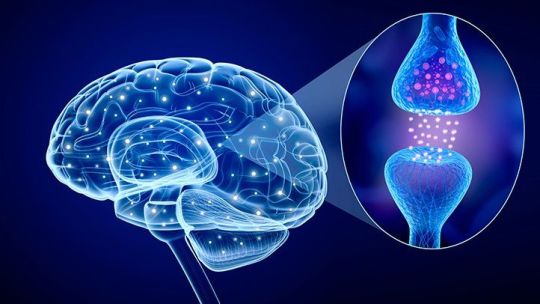
Serotonin is a neurotransmitter that plays a significant role in mental health. Low serotonin levels are commonly associated with people who have depression, and in some cases, not having enough serotonin may also cause anxiety.
Current research suggests that CBD has the potential to affect how the brain responds to serotonin. In one study, a small group of people were given CBD doses and then presented with stressful situations. Researchers observed that the participants' anxiety levels decreased, but this is still early-stage research.
Potential Impact on Vanilloid Receptors
Vanilloid receptors, known as TRPV1, function as ion channels and play a key role in the human body's perception of pain and inflammation. CBD has been observed to bind to these receptors, which may help to reduce sensations of pain and inflammation. Again, further research is required to substantiate these potential effects.
Potential Influence on the Immune System
The immune system is another area where CBD is thought to have an impact, particularly regarding inflammation. Some studies suggest that CBD may help reduce inflammation and help with immune system response by interacting with CB2 receptors, which are more common in the immune system.
However, it's crucial to emphasise that while these findings are promising, they are not definitive. The complex nature of the human immune system means that much more research is needed to understand how CBD might be used in this context.
Conclusion
While CBD oil has been the subject of much attention and research, it's important to remember that its interactions with the human body are complex and not fully understood. While preliminary findings suggest potential benefits, they should not be taken as definitive medical claims. More research is needed to fully understand how CBD interacts with the body and the potential implications of these interactions.
As with any substance, individuals considering using CBD oil should consult with a healthcare provider to discuss potential risks and benefits. It's also important to consider the legal status of CBD in your area. Despite its growing popularity, CBD oil remains a controversial substance in many jurisdictions, and its use is not without legal implications.
Remember, this article does not provide medical advice, diagnosis, or treatment. It's always important to learn from reliable sources and consult healthcare professionals when considering health-related decisions.
#cbd#cbdoil#serotonin#cannabis#endocannabinoidsystem#endocannabinoids#cannabinoids#health#feelgreatagain#budandtender
0 notes
Text
A TrustPilot Review Analysis: The Impact of Bud & Tender's Premium CBD Oil

Introduction:
The world of Cannabidiol (CBD) oil has seen an exponential rise in recent years due to its purported therapeutic benefits. This article analyses a TrustPilot review by Jamie McDonough, who detailed his experience using Bud & Tender's premium CBD oil for managing anxiety and panic attacks.
Background:
Before delving into the review, it's important to understand the context surrounding CBD oil. Derived from the hemp plant, CBD oil is often marketed as a natural remedy with potential health benefits, one of which includes anxiety management. Despite the ongoing debates about its effectiveness and regulatory status, many people have turned to CBD oil as an alternative or supplementary treatment for various ailments.
The Review:

Jamie McDonough's review opens with a candid recounting of his struggles with anxiety and panic attacks, conditions that affect millions worldwide. His initial solution was antidepressants prescribed by a General Practitioner (GP), a common course of action for such disorders. However, he experienced adverse side effects, prompting him to seek an alternative. This scenario emphasises the need for more tolerable and effective treatment options for mental health disorders.
The review highlights that Jamie's search led him to CBD oil, attracted by its natural composition and minimal side effects. This reflects a growing trend among consumers who prefer natural and holistic remedies over synthetic pharmaceuticals, driven by concerns about side effects and the desire for gentler treatment methods.
Jamie’s exploration of the CBD market revealed significant price variations, prompting further investigation. This point underscores the importance of consumer education in navigating the complex and often confusing CBD market. Informed consumers are likely to be more discerning, recognizing that price disparities often reflect differences in product quality, purity, and third-party testing procedures.
The Decision:
Jamie chose Bud & Tender based on positive reviews and assurances of its natural composition. This decision reflects the power of customer reviews in influencing purchasing decisions, particularly in a market saturated with options. It also underscores the value consumers place on transparency and trustworthiness in a company's product offerings.

The Impact:
After using Bud & Tender's CBD oil, Jamie reported significant improvements in his anxiety levels and sleep quality, with no further panic attacks. This anecdotal evidence aligns with scientific research suggesting that CBD may have anxiolytic properties. However, it's important to note that individual experiences with CBD oil can vary, and what works for one person may not work for another.
Conclusion:
Jamie's review is a testament to his journey towards better mental health, highlighting the potential role of natural products like CBD oil. It offers insights into consumer behaviour in the CBD market, emphasising the importance of transparency, third-party testing, and positive customer reviews. While the review provides valuable anecdotal evidence, it's essential to remember that more rigorous clinical trials are needed to firmly establish CBD oil's efficacy and safety profile. Nevertheless, stories like Jamie's contribute to the ongoing conversation about alternative and holistic approaches to healthcare.
0 notes
Text
Cannabinoids and Their Role in Managing Pain from Meniscus Tear

Introduction
A meniscus tear is a common knee injury that occurs when the cartilage in the knee is damaged. This type of injury causes pain, swelling, and limited mobility in the knee joint. While rest, physical therapy, and surgery are common treatments, research shows that cannabinoids may also help manage pain associated with a meniscus tear. Cannabinoids refer to chemical compounds found in the cannabis plant as well as similar compounds produced naturally in the body. Let's explore the different types of cannabinoids and their potential for pain relief.
Endocannabinoids
Endocannabinoids are cannabinoids produced naturally by the human body. The two main endocannabinoids are anandamide and 2-arachidonoylglycerol (2-AG). These compounds bind to cannabinoid receptors throughout the body and brain. Through this process, endocannabinoids help regulate pain, appetite, mood, memory, reproduction, and more.
Research indicates that people with chronic pain conditions like arthritis have lower levels of endocannabinoids. Supplementing the body's natural endocannabinoids with phytocannabinoids or synthetic cannabinoids may help reduce pain levels. The endocannabinoid system is complex, but enhancing it may provide pain relief without the psychoactive effects of cannabis.
Phytocannabinoids
Phytocannabinoids are cannabinoids produced by the cannabis plant. The most well-known phytocannabinoid is tetrahydrocannabinol (THC), which is responsible for the "high" associated with cannabis. However, over 100 other phytocannabinoids have been identified, including cannabidiol (CBD), cannabinol (CBN), and more.
Research shows that THC and other phytocannabinoids can effectively reduce pain and inflammation. THC binds to CB1 receptors in the brain, spinal cord, connective tissues, and other areas. This activates the endocannabinoid system and dulls pain perception. CBD also influences the endocannabinoid system and reduces pain and swelling. It shows promise for managing chronic pain with minimal side effects.

Cannabinoids for Meniscus Tear Pain
Studies reveal that cannabinoids hold the potential for managing pain after a meniscus injury and surgery. THC and CBD can reduce acute and neuropathic pain. Cannabinoids may also decrease inflammation which contributes to pain and swelling after a meniscus tear.
Research shows cannabinoids are effective for various types of musculoskeletal and nerve pain. Since a meniscus tear can involve both tissue injury and nerve pain, cannabinoids may target multiple sources of pain. Topical THC and CBD creams applied to the knee may penetrate joint tissues and reduce local inflammation. Oral cannabinoid oils, sprays, or edibles enter the bloodstream for whole-body pain relief.

Human trials are still limited, but initial research is promising. A 2017 study found that vaporised cannabis improved pain scores after knee surgery. Patients also reported improved sleep and reduced anxiety. Another study saw significant pain reduction from an oral cannabis extract after knee surgery. Larger human studies are needed, but current research indicates cannabinoids hold promise for relieving post-operative and chronic pain from a meniscus tear.
Potential Risks
While cannabinoids show potential for managing pain, they carry some risks. THC can cause impairment, dizziness, increased heart rate, and coordination issues. CBD is safer but may interact with certain medications. Cannabis products may also contain contaminants if not properly regulated. Patients with substance abuse disorders should use cannabinoids cautiously.
It's also important to note that patients should understand local laws before using cannabinoid products. Additionally, thorough research is still needed to define appropriate cannabinoid dosages for different medical conditions. Patients should consult their healthcare provider before using cannabinoids.
Conclusion
In conclusion, early research suggests that cannabinoids like THC, CBD, and others may help relieve pain and inflammation associated with a meniscus tear. They appear to do this by supplementing the body's natural endocannabinoids and influencing pain signalling pathways. While human studies are still in the early stages, cannabinoids present a promising option for multi-modal pain management. Patients should work with their healthcare provider to weigh the potential benefits and risks of cannabinoids for their individual health needs. As more clinical trials emerge, the therapeutic role of cannabinoids for a meniscus tear and other musculoskeletal conditions will become clearer.
0 notes
Text
The Genesis of Cyber Monday

The concept of Cyber Monday was first introduced in the United States in 2005 by Ellen Davis and Scott Silverman of the National Retail Federation. This term was coined to mark the first Monday after Thanksgiving, a day that had been observed as a significant online shopping period. The idea behind Cyber Monday was to encourage people to shop online, a relatively new concept at the time.
In the early 2000s, retailers noticed a trend where consumers, fresh from their Thanksgiving celebrations, would return to work on Monday and make use of high-speed internet connections to browse and buy items online. Recognizing this trend, marketers seized the opportunity to create a new shopping holiday, thus Cyber Monday was born.
Cyber Monday: A Digital Revolution
Cyber Monday marked a digital revolution in the retail industry. It was an attempt to replicate the success of Black Friday, a long-standing post-Thanksgiving tradition that involved brick-and-mortar stores offering significant discounts. However, Cyber Monday was designed with the online shopper in mind, providing a convenient platform for those who preferred to avoid the bustling crowds of Black Friday.
In its inaugural year, Cyber Monday sales reached $484 million. By 2010, sales had more than doubled to over $1 billion, making it the biggest online shopping day of the year in the United States. This growth continued unabated, with Cyber Monday sales reaching a record-breaking $9.4 billion in 2019.
Global Influence of Cyber Monday
Cyber Monday quickly gained popularity beyond the borders of the United States. Countries such as Canada, the United Kingdom, Brazil, Portugal, Germany, UAE, Egypt, and others adopted this shopping tradition, each adding their unique spin to the event. In some regions, Cyber Monday has even surpassed Black Friday in terms of sales and customer participation, solidifying its position as a global phenomenon.
Impact on E-commerce
Cyber Monday has had a profound impact on e-commerce. It helped accelerate the shift from traditional in-store shopping to online platforms. The rise of Cyber Monday also prompted retailers to invest in their online presence and improve their digital infrastructure to handle the increased traffic and sales.
Moreover, the advent of Cyber Monday has led to the development of new technologies and strategies for online marketing, customer engagement, and logistics. It has pushed retailers to innovate and adapt to the ever-evolving demands of online consumers.
Cyber Monday: Today and Beyond
Today, Cyber Monday is more than just a day of discounts—it's a critical event in the retail calendar that influences shopping behaviours and trends. It continues to evolve with advancements in technology, changes in consumer behaviour, and the global economic landscape.
As we look to the future, it's clear that Cyber Monday will continue to shape the world of e-commerce. Whether through the introduction of new technologies like augmented reality (AR) shopping experiences, the use of artificial intelligence (AI) for personalised marketing, or the expansion of mobile commerce, Cyber Monday promises to remain an exciting fixture in the global retail landscape.
A Friendly Reminder

Before we conclude, here's a friendly reminder from Bud & Tender: our Black Friday offer of 20% off site-wide ends today November 27th at midnight. Don't miss out on this fantastic opportunity to enjoy our high-quality, broad-spectrum CBD oil at discounted prices - doesn't matter if you're a returning customer or completely new to CBD. Happy shopping!
0 notes
Text
The Body's Own Chill Pills: The Endocannabinoid System and Stress Resilience

Introduction
The endocannabinoid system is a complex cell-signalling system that plays an important role in regulating our physiology, mood, and everyday experience. Endocannabinoids (not to be confused with phytocannabinoids like CBD) are molecules that bind to cannabinoid receptors located throughout the central and peripheral nervous systems. Research over the past few decades has shown that the endocannabinoid system is deeply interconnected with how we respond to stress. Let's explore the evidence on the role endocannabinoids play in modulating our stress response.
What are endocannabinoids?
The word endocannabinoid contains the prefix “endo-” meaning “within” or “internal.” Endocannabinoids are cannabinoids produced naturally within the human body. The two main endocannabinoids that have been identified are anandamide and 2-AG (2-arachidonoylglycerol). These lipid neurotransmitters are synthesised on demand in response to increased intracellular calcium levels.

After being synthesised, endocannabinoids travel backwards across the synaptic cleft and bind to cannabinoid receptors on the presynaptic neuron. This inhibits the release of neurotransmitters and reduces the excitability of the postsynaptic neuron. Through this mechanism, endocannabinoids act as a kind of circuit breaker that prevents excessive neuronal firing and brings overactive neurons back into homeostasis.
The endocannabinoid system and stress
The endocannabinoid system becomes activated in response to stress as part of a protective mechanism. Stressful stimuli trigger an increase in endocannabinoid signalling throughout the brain and body. This causes a dampening of the excitatory neurotransmitters that initiate the body’s fight-or-flight response.
Research shows that chronic stress can cause the downregulation and dysfunction of the endocannabinoid system over time. This may contribute to stress-related illnesses. Enhancing endocannabinoid tone appears to increase resilience and help organisms adapt to stress exposure.

Animal studies
Animal studies allow researchers to directly investigate the role of endocannabinoids in the stress response.
One study found that mice lacking CB1 endocannabinoid receptors showed increased anxiety-like behaviour and impaired fear extinction learning. This suggests endocannabinoids help regulate the adaptation to stress via their action on CB1 receptors.
Other rodent studies show that chronic stress exposure decreases CB1 receptor density in regions of the brain involved in stress and emotion, such as the hypothalamus. This downregulation was associated with increased activation of the hypothalamic-pituitary-adrenal (HPA) axis. The HPA axis controls reactions to stress and regulates many body processes.
Administering cannabinoids prevented the downregulation of CB1 receptors from chronic stress. It also reduced HPA axis activity and decreased depressive behaviours in the mice.
Human studies
While animal models allow more invasive research, human studies also shed light on the role of endocannabinoids in our experience of stress.
One study examined endocannabinoid levels in hair samples of humans exposed to chronic stress. Individuals classified as “stress resilient” based on questionnaires had higher levels of endocannabinoids like anandamide. This supports the theory that robust endocannabinoid signalling increases resilience against stressors.
Brain imaging studies also show altered endocannabinoid activity in stress-related disorders like PTSD and depression. Patients with these conditions often have reduced CB1 receptor availability in areas involved in threat processing and fear extinction. Some researchers hypothesize that increasing endocannabinoid tone could potentially help treat these illnesses characterized by dysregulated stress responses.
Current gaps in understanding
While the evidence clearly demonstrates a link between endocannabinoids and stress adaptation, there is still much to uncover. Questions remain about the specific mechanisms driving changes in endocannabinoid signalling during stress exposure.
More human studies are needed to clarify the therapeutic potential of targeting the endocannabinoid system to mitigate maladaptive stress responses. Overall, research indicates great promise in further elucidating the neuromodulatory role of endocannabinoids in resilience and stress-related health outcomes.
Conclusion
In summary, endocannabinoids are important homeostatic signalling molecules that help regulate our physiological and psychological responses to stress. They appear to buffer the effects of stress by inhibiting excessive neuronal excitation through their action on cannabinoid receptors. Chronic stress disrupts optimal endocannabinoid function, contributing to stress-related disorders. Enhancing endocannabinoid signalling shows potential for increasing stress resilience, though more research is still needed. Understanding the complex role endocannabinoids play in the stress response may lead to novel therapeutic targets for stress-related illnesses in the future.
#cbd#cbdoil#stress#stress management#stressrelief#stressresilience#cannabis#health#feelgreatagain#budandtender
0 notes
Text
Black Friday Bonanza: The Six Most Popular Products to Buy
Black Friday has become a global phenomenon, with retailers offering steep discounts on popular products. This annual event is an opportunity for consumers to get ahead of their holiday shopping and take advantage of some fantastic deals. Here are the six most popular products to buy on Black Friday.
1. Electronics: A Shopper's Paradise

Electronics are perennial favourites during Black Friday sales. From televisions and laptops to smartphones and gaming consoles, the discounts available on these high-ticket items are hard to resist. Brands such as Apple, Samsung, Sony, and Microsoft often feature in the list of top-selling electronics, making it an ideal time to upgrade your tech gear.
2. Home Appliances: Big Savings on Big-Ticket Items
Home appliances, including refrigerators, washing machines, dishwashers, and ovens, are another popular category. High-quality appliances from brands like Whirlpool, LG, and Bosch can be found at significantly reduced prices, offering savings that can run into hundreds of dollars.
3. Fashion and Apparel: Style at a Steal

Clothing, shoes, and accessories also see substantial markdowns during Black Friday sales. Whether you're looking for designer labels or everyday essentials, the discounts offered make it a great time to revamp your wardrobe or pick up stylish gifts for loved ones.
4. Toys and Games: Fun for Less
With the holiday season around the corner, toys and games are another hot commodity. From Lego sets and Barbie dolls to board games and puzzles, these items are often heavily discounted, making it the perfect time to shop for the little ones in your life.
5. Health and Wellness: CBD Oil

Health and wellness products have seen a surge in popularity in recent years, and one product leading the charge is CBD oil. Known for its potential health benefits, CBD oil is used by many to help manage a variety of issues.
This Black Friday, Bud & Tender, a leading provider of premium CBD oil, is offering an unbeatable deal. With the code BF20, you can enjoy a site-wide discount of 20%. This is a fantastic opportunity to try this increasingly popular wellness product or stock up if you're already a fan.
6. Beauty Products: Look Good for Less
Beauty products, from skincare and makeup to hair care and fragrances, are another category that sees significant sales during Black Friday. Brands like Sephora, Ulta, and Estée Lauder often offer deep discounts on their range of products, making it an ideal time to replenish your beauty supplies or pick up gifts.
Final Thoughts
Black Friday offers a chance to snag some fantastic deals on a wide variety of products. Whether you're in the market for electronics, home appliances, fashion, toys, health and wellness products, or beauty supplies, there's something for everyone. And don't forget, if you're interested in trying CBD oil or restocking your supply, use the code BF20 at Bud & Tender for a 20% site-wide discount. Happy shopping!
#black friday#black friday deals#black friday sale#black friday 2023#black friday offers#cbd#cbdproducts#cbdoil#feelgreatagain#budandtender
0 notes